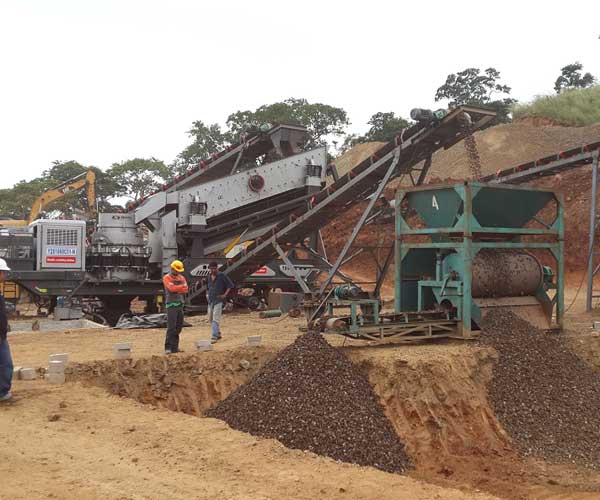
The sustainable utilization of iron ore tailings as fine aggregates in concrete represents a promising solution for the construction industry. By repurposing this mining byproduct, we can reduce environmental impact, minimize resource depletion, and achieve economic benefits.
24 Online Service
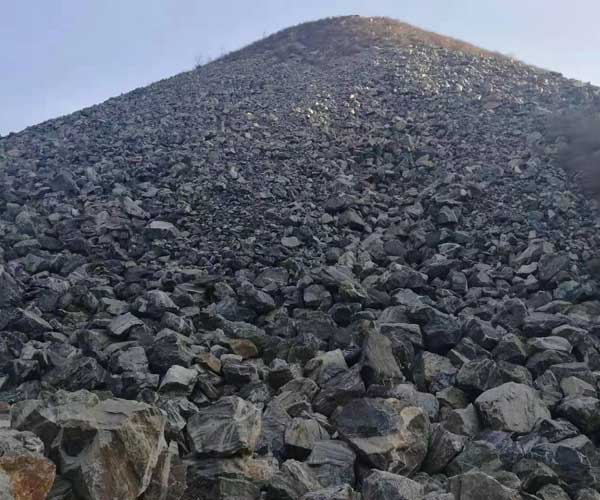
Iron ore mining is a vital industry that plays a significant role in global economic development. However, this extraction process generates vast amounts of waste known as iron ore tailings. With the growing concerns about environmental sustainability, it becomes crucial to understand the nature and implications of these tailings.
Iron ore tailings are the residue left over after the extraction and beneficiation of iron ore. During the mining process, ore is crushed and ground into a fine powder. Subsequently, the valuable iron minerals are separated from the gangue minerals using various techniques, such as magnetic separation, flotation, or gravity separation. The remaining material, consisting of finely ground rock and mineral particles, is what is known as iron ore tailings.
The composition of iron ore tailings varies depending on the type of ore being processed, the extraction method used, and the characteristics of the surrounding rock. Generally, iron ore tailings contain a mixture of iron oxides, quartz, alumina, clay minerals, and traces of heavy metals. The physical and chemical properties of tailings depend on factors such as particle size, mineralogy, and the presence of impurities.
Iron ore tailings are usually stored in large containment structures known as tailings dams. The primary environmental concern associated with these dams is the potential for water contamination. If not managed properly, tailings dams can leak or rupture, releasing toxic substances into the surrounding environment. This pollution can have severe ecological consequences, affecting aquatic ecosystems and potentially endangering human health.
Dry tailings stored in open areas can generate airborne dust, which may contain harmful particles, including heavy metals and silica. These particles can be carried over long distances by wind, posing a risk to both human health and the environment. Dust mitigation measures, such as revegetation and dust suppression techniques, are essential to minimize this impact.
Tailings dams occupy vast areas of land, often displacing natural ecosystems and hindering their ecological recovery. The land affected by tailings storage may become unsuitable for future use, posing challenges for land rehabilitation and land reclamation efforts. Innovative approaches are needed to restore these areas and promote sustainable land management practices.
With advancements in technology, it is now possible to recover valuable minerals from tailings. Through processes such as magnetic separation, gravity concentration, and froth flotation, it becomes economically viable to extract additional resources from these waste materials. Tailings reprocessing not only reduces environmental impacts but also contributes to resource conservation and the circular economy.
Traditional tailings dams are being gradually replaced by safer and more sustainable disposal methods. These include dry stacking, where tailings are filtered, dewatered, and stacked in a controlled manner, reducing the risk of water contamination. Another approach is thickened tailings, which involve removing water from the tailings to produce a denser material that can be stored in smaller containment areas.
To mitigate the risk of dam failures, geotechnical engineering plays a crucial role. Improved design practices, including geosynthetic liners, advanced monitoring systems, and better understanding of tailings behavior, can enhance the safety and stability of tailings dams. The implementation of strict regulations and guidelines for tailings dam construction and maintenance is also essential.
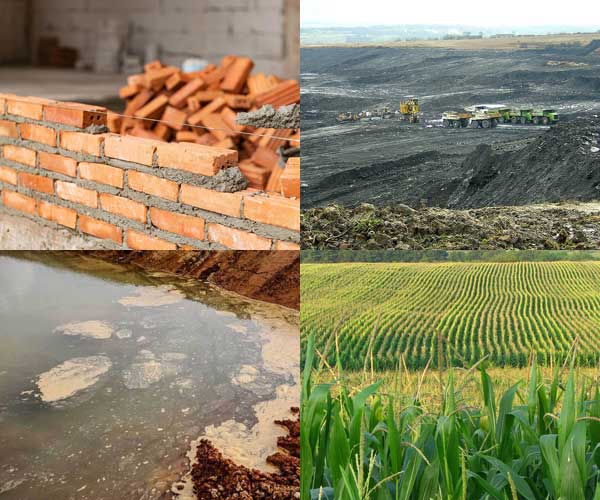
Iron tailings, a byproduct of iron ore processing, have long been considered a challenging waste material. However, recent advancements in technology and innovative research have shed light on the untapped potential of these tailings. Far from being merely a burden on the environment, iron tailings offer a range of valuable applications across various industries.
One of the most promising uses of iron tailings lies in the construction industry. With their fine-grained texture and abundance, iron tailings can be processed and transformed into building materials. When mixed with cement or other binding agents, iron tailings can serve as a partial replacement for traditional aggregates in concrete production. This application not only reduces the demand for natural resources but also offers improved durability and strength to the final product. Moreover, incorporating iron tailings into construction materials can reduce the carbon footprint associated with cement production, a major contributor to greenhouse gas emissions.
Iron tailings can play a vital role in land rehabilitation and reclamation efforts. By leveraging the unique properties of these tailings, such as their ability to retain moisture and nutrients, they can be utilized in the restoration of degraded lands, mine sites, and abandoned quarries. By providing a fertile substrate for plant growth, iron tailings aid in the establishment of vegetation and the restoration of ecosystems. This not only helps in combating soil erosion but also promotes biodiversity conservation and enhances the overall aesthetics of the rehabilitated areas.
Geopolymers, which are a type of synthetic material with properties similar to traditional cement, have gained attention as a sustainable alternative in the construction industry. Iron tailings can be used as a key ingredient in geopolymer production. By combining tailings with alkaline activators, such as sodium hydroxide or sodium silicate, geopolymer binders can be created. These binders offer excellent compressive strength, low shrinkage, and improved fire resistance compared to traditional cement. By incorporating iron tailings into geopolymers, we can further reduce the environmental impact of construction activities.
The high iron content in iron tailings can make them a valuable resource in agriculture. When properly processed and treated, these tailings can be utilized as a source of iron in fertilizers and soil amendments. Iron deficiency is a common problem in many soils, negatively impacting plant growth and crop productivity. By incorporating iron tailings into fertilizers, we can provide a sustainable and cost-effective solution for enhancing soil fertility and addressing nutrient deficiencies. Additionally, the incorporation of iron tailings into soil amendments can improve water retention capacity and enhance soil structure, leading to better crop yields and reduced water consumption.
Iron tailings possess unique properties that make them suitable for environmental remediation purposes. The high adsorption capacity of these tailings enables them to effectively remove contaminants from wastewater, such as heavy metals, dyes, and organic pollutants. By employing iron tailings as a low-cost adsorbent in water treatment systems, we can mitigate water pollution and reduce the environmental impact of industrial activities. Furthermore, iron tailings can be used in the passive treatment of acid mine drainage, neutralizing the acidic pH and reducing the release of harmful substances into water bodies.
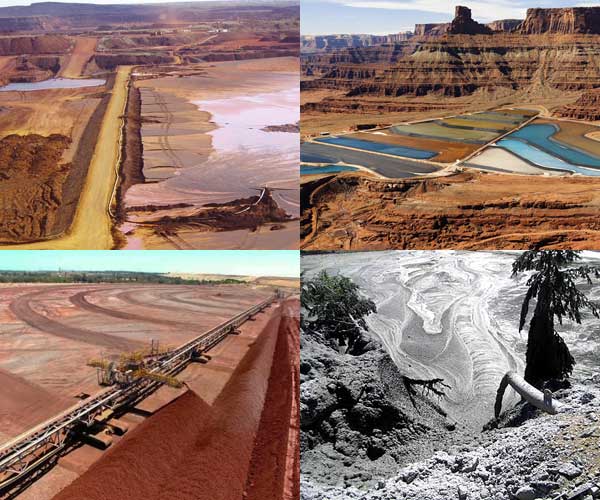
Iron ore tailings, a byproduct of iron ore mining and processing, have long been a subject of interest and concern. As mining operations strive for more sustainable practices, understanding the different types of iron ore tailings becomes crucial. These tailings, typically stored in large impoundments, hold potential both as a resource and as a challenge for environmental management.
Processed iron ore tailings result from beneficiation processes that aim to improve the quality of iron ore by removing impurities. These tailings typically have a finer particle size compared to other types. Depending on the beneficiation method used, the composition of processed tailings can vary. They often contain high levels of iron, but may also include trace amounts of other minerals, such as silica, alumina, and phosphorous.
Coarse iron ore tailings consist of larger particles that result from mechanical processes, such as crushing and screening. These tailings have a coarser grain size compared to processed tailings. Due to their composition, coarse tailings may contain a higher proportion of gangue minerals and lower iron content. Proper management of coarse tailings is crucial to prevent environmental risks, such as dust generation and erosion.
Thickened tailings are a form of iron ore tailings that undergo dewatering processes to reduce water content. This process aims to minimize the amount of water stored in tailings impoundments, thus reducing the environmental footprint and enhancing stability. Thickened tailings can have higher solids content, making them less prone to liquefaction and easier to handle. However, it is important to ensure the stability of thickened tailings structures to prevent potential failures and environmental hazards.
Filtered iron ore tailings are created by employing mechanical filtration techniques to separate solids from water. The resulting tailings have a relatively low water content and a high proportion of solids. Filtered tailings offer advantages such as reduced water consumption, increased storage capacity, and enhanced geotechnical properties. The dry nature of filtered tailings can facilitate reclamation efforts and reduce the overall environmental impact associated with tailings management.
Paste tailings are a form of iron ore tailings that have been mixed with binders to create a paste-like material. The addition of binders improves the stability of the tailings and allows for more controlled deposition. Paste tailings can have varying solid contents depending on the desired consistency and the specific application. The high water retention of paste tailings can limit water seepage and promote progressive rehabilitation of the deposited areas.
Concrete, a ubiquitous construction material, plays a vital role in modern infrastructure development. Its versatility, durability, and strength make it an essential component in various construction projects. However, the quest for sustainable development demands an examination of alternative materials and their impact on concrete properties.
One of the key aspects of concrete is its workability, which refers to its ease of mixing, placing, and compacting. Iron ore tailings, when used as a partial replacement for fine aggregates in concrete, can influence its workability. The fine particles present in the tailings can fill the voids between coarser aggregates, resulting in a denser mix. However, excessive addition of tailings may lead to an increase in water demand, affecting the workability negatively. Careful optimization of the mix design is crucial to maintain the desired workability while incorporating iron ore tailings.
Concrete strength is a critical parameter that directly affects the structural performance of buildings and infrastructure. Incorporating iron ore tailings as a partial replacement for fine aggregates in concrete can have varying effects on its strength development. The pozzolanic and cementitious properties of iron ore tailings can contribute to the formation of additional hydration products, enhancing the overall strength of the concrete. However, excessive amounts of tailings or inadequate mix design can result in reduced strength due to poor particle packing and increased porosity.
The durability of concrete is crucial for ensuring its long-term performance. Iron ore tailings possess both beneficial and detrimental effects on the durability aspects of concrete. On one hand, the high silica content in the tailings can contribute to improved resistance against alkali-silica reaction (ASR) and sulfate attack. On the other hand, the presence of fine particles may increase the permeability of concrete, potentially leading to increased chloride ion penetration and reduced resistance to corrosion of reinforcement.
The utilization of iron ore tailings in concrete production offers several environmental benefits. By utilizing this waste material, we can reduce the need for traditional fine aggregates, thereby conserving natural resources. Additionally, the reuse of iron ore tailings in construction reduces the demand for landfill space and mitigates the environmental risks associated with their disposal.
While iron ore tailings present potential advantages for concrete, several challenges must be addressed. Proper characterization and quality control of tailings are essential to ensure consistent performance. Tailings from different sources and beneficiation processes can exhibit significant variations in chemical and physical properties, requiring tailored mix designs. Additionally, the long-term durability of concrete containing iron ore tailings needs careful evaluation through extensive testing and monitoring.
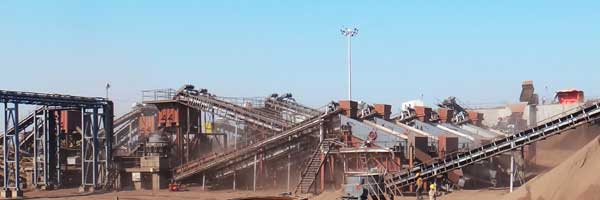
The construction industry plays a vital role in the global economy, but it is also known for its significant environmental impact. One of the main concerns is the extraction and utilization of natural resources, including aggregates for concrete production. However, the increasing demand for concrete, along with the finite availability of natural aggregates, calls for sustainable alternatives. Iron ore tailings, a byproduct of iron ore mining and processing, have emerged as a promising solution for replacing conventional fine aggregates in concrete.
One of the major advantages of utilizing iron ore tailings in concrete is the reduction of environmental impact. Traditional sand mining for obtaining fine aggregates contributes to the depletion of riverbeds and coastal areas, leading to erosion and loss of habitats. By utilizing iron ore tailings, we can minimize the need for sand extraction and preserve natural resources. This approach aligns with sustainable development goals and promotes responsible mining practices.
In addition to the environmental benefits, the use of iron ore tailings as fine aggregates can offer economic advantages. As the demand for natural aggregates increases, their availability decreases, resulting in rising costs. Iron ore tailings, on the other hand, are abundant and are often considered waste. By repurposing this byproduct, construction projects can reduce material costs and achieve cost savings. Furthermore, the use of iron ore tailings can enhance the economic viability of mining operations by creating an additional revenue stream.
Concrete is a widely used construction material known for its strength and durability. When incorporating iron ore tailings as fine aggregates, it is crucial to assess their impact on the mechanical and durability properties of concrete. Numerous studies have shown that iron ore tailings can positively influence concrete performance. They contribute to improved workability, while maintaining or even enhancing compressive strength, flexural strength, and abrasion resistance. However, it is essential to consider the specific characteristics of the tailings and conduct thorough testing to ensure optimal concrete performance.
The first step in repurposing iron ore tailings is beneficiation, a process that separates the valuable iron particles from the waste materials. Various techniques such as gravity separation, magnetic separation, and flotation can be employed to concentrate the iron content and reduce impurities. Once the beneficiation process is complete, the resulting iron ore concentrate can be further processed to create concrete aggregate.
The iron ore concentrate is ground into a fine powder to ensure the appropriate particle size for concrete production. Grinding mills are used to crush the concentrate into smaller particles, which increases the surface area and facilitates the chemical reactions during the subsequent steps.
To enhance the properties of the iron ore concentrate and improve its suitability as concrete aggregate, agglomeration techniques can be applied. Agglomeration involves binding the fine particles together to form larger aggregates. This process can be achieved through pelletization or briquetting, using additives such as cement, lime, or organic binders.
Heat treatment, also known as firing or sintering, is often employed to strengthen the agglomerates and enhance their mechanical properties. This involves subjecting the aggregates to high temperatures to promote bonding between the particles. The resulting aggregates, known as sintered pellets or briquettes, exhibit improved strength and durability, making them suitable for use as concrete aggregate.
Our Projects
Copyright © ZENITH, All Right Reserved.
